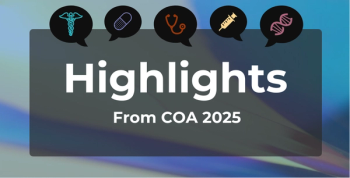
Dr Allen Lichter: Technology Is Present in Oncology, but the Future Is Brighter
While there is currently a presence of technology in healthcare, the future holds much more promise, said Allen Lichter, MD, FASCO, senior partner of TRG Healthcare.
While there is currently a presence of technology in healthcare, the future holds much more promise, said Allen Lichter, MD, FASCO, senior partner of TRG Healthcare.
Transcript
How is telehealth allowing community oncologists to reach more patients and improve care?
So, I think, today, telehealth is present in oncology in certain specific areas. Obviously, our imaging colleagues use telehealth to transport images all around the world, and if you go to an emergency department at night, your image is often read in another part of the world, where it’s daylight. Our pathology colleagues are using telecommunications to transmit images. Our patients are sometimes sending images—I certainly sometimes let my dermatologist take a look at certain things on my skin that saves me a trip to the office.
So, we’re touching it. Another area is patient engagement, trying to keep using technology—often an app or a synthetic conversational agent, called a chatbot—to ask the patient how they’re doing, to check up on symptoms, and to allow patients to tell us much earlier about something that’s going on and head it off at the pass and not react to it as a crisis. But the future is going to have so much more. We’re going to have remote sensors. We’re going to be able to monitor physiologic processes. We’re going to be able diagnose and eventually provide therapeutic interventions remotely.
Another area that oncology touches with telehealth is the second opinion process. There are many major institutions and cancer centers that will do second opinions through telemedicine versus having the patient travel for hundreds or thousands of miles.
There’s a presence now, but the future is extremely interesting.
The concept that you or I as patients, the only way we can have an interaction with the healthcare system is to drive to an office or a hospital, wait in the waiting room, go back, get into a gown, and wait for the healthcare provider to come in the room, that’s certainly the paradigm that I grew up in and is the paradigm that predominates in medicine today, but there’s so many ways to deliver effective healthcare. It doesn’t necessarily involve that face-to-face interaction. And believe me, I think face to face in medicine is the essence of medicine. Btu sometimes we need to expand our capacity and to be more convenient and fit into the patient’s life better. That’s where I see us making strides.
Newsletter
Stay ahead of policy, cost, and value—subscribe to AJMC for expert insights at the intersection of clinical care and health economics.








